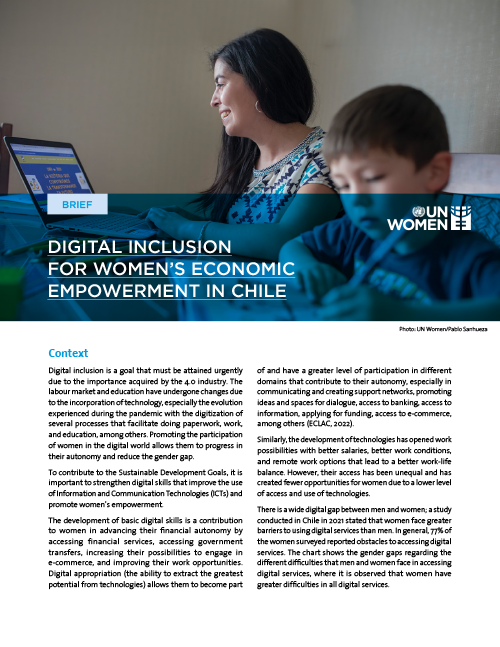
Digital Inclusion for Women's Economic Empowerment in Chile

Digital inclusion is a goal that must be attained urgently due to the importance acquired by the 4.0 industry. The labour market and education have undergone changes due to the incorporation of technology, especially the evolution experienced during the pandemic with the digitization of several processes that facilitate doing paperwork, work, and education, among others. Promoting the participation of women in the digital world allows them to progress in their autonomy and reduce the gender gap.
To contribute to the Sustainable Development Goals, it is important to strengthen digital skills that improve the use of Information and Communication Technologies (ICTs) and promote women’s empowerment. The development of basic digital skills is a contribution to women in advancing their financial autonomy by accessing financial services, accessing government transfers, increasing their possibilities to engage in e-commerce, and improving their work opportunities.
Digital appropriation (the ability to extract the greatest potential from technologies) allows them to become part of and have a greater level of participation in different domains that contribute to their autonomy, especially in communicating and creating support networks, promoting ideas and spaces for dialogue, access to banking, access to information, applying for funding, access to e-commerce, among others (ECLAC, 2022).
Similarly, the development of technologies has opened work possibilities with better salaries, better work conditions, and remote work options that lead to a better work-life balance. However, their access has been unequal and has created fewer opportunities for women due to a lower level of access and use of technologies.
There is a wide digital gap between men and women; a study conducted in Chile in 2021 stated that women face greater barriers to using digital services than men. In general, 77% of the women surveyed reported obstacles to accessing digital services. The chart shows the gender gaps regarding the different difficulties that men and women face in accessing digital services, where it is observed that women have greater difficulties in all digital services.